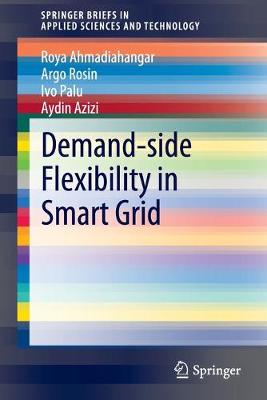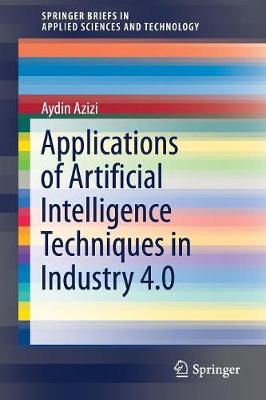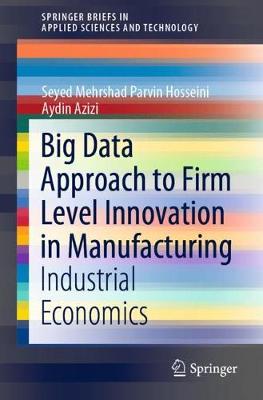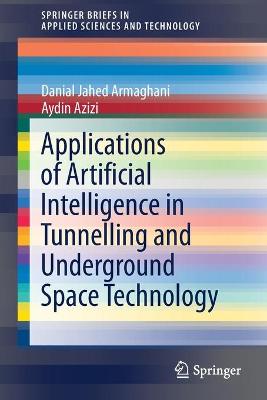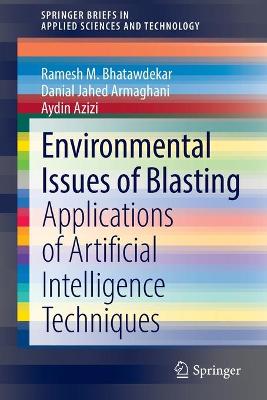SpringerBriefs in Applied Sciences and Technology
6 total works
Demand-side Flexibility in Smart Grid
by Roya Ahmadiahangar, Argo Rosin, Ivo Palu, and Aydin Azizi
Applications of Artificial Intelligence Techniques in Industry 4.0
by Aydin Azizi
This effort leads to proposing a novel artificial intelligence algorithm which has been named hybrid artificial intelligence optimization technique to perform optimization of RNP as a hard learning problem. This hybrid optimization technique consists of two different optimization phases. First phase is optimizing RNP by Redundant Antenna Elimination (RAE) algorithm and the second phase which completes RNP optimization process is Ring Probabilistic Logic Neural Networks (RPLNN).
The hybrid paradigm is explored using a flexible manufacturing system (FMS) and the results are compared with well-known evolutionary optimization technique namely Genetic Algorithm (GA) to demonstrate the feasibility of the proposed architecture successfully.
This book provides a concise introduction to the behavior of mechanical structures and testing their stochastic stability under the influence of noise. It explains the physical effects of noise and in particular the concept of Gaussian white noise. In closing, the book explains how to model the effects of noise on mechanical structures, and how to nullify / compensate for it by designing effective controllers.
Big Data Approach to Firm Level Innovation in Manufacturing
by Seyed Mehrshad Parvin Hosseini and Aydin Azizi
This book discusses utilizing Big Data and Machine Learning approaches in investigating five aspects of firm level innovation in manufacturing; (1) factors that determine the decision to innovate (2) the extent of innovation (3) characteristics of an innovating firm (4) types of innovation undertaken and (5) the factors that drive and enable different types of innovation. A conceptual model and a cost-benefit framework were developed to explain a firm's decision to innovate. To empirically demonstrate these aspects, Big data and machine learning approaches were introduced in the form of a case study. The result of Big data analysis as an inferior method to analyse innovation data was also compared with the results of conventional statistical methods. The implications of the findings of the study for increasing the pace of innovation are also discussed.
Applications of Artificial Intelligence in Tunnelling and Underground Space Technology
by Danial Jahed Armaghani and Aydin Azizi
This book covers the tunnel boring machine (TBM) performance classifications, empirical models, statistical and intelligent-based techniques which have been applied and introduced by the researchers in this field. In addition, a critical review of the available TBM performance predictive models will be discussed in details. Then, this book introduces several predictive models i.e., statistical and intelligent techniques which are applicable, powerful and easy to implement, in estimating TBM performance parameters. The introduced models are accurate enough and they can be used for prediction of TBM performance in practice before designing TBMs.
Environmental Issues of Blasting
by Ramesh M. Bhatawdekar, Danial Jahed Armaghani, and Aydin Azizi
This book gives a rigorous and up-to-date study of the various AI and machine learning algorithms for resolving environmental challenges associated with blasting. Blasting is a critical activity in any mining or civil engineering project for breaking down hard rock masses. A small amount of explosive energy is only used during blasting to fracture rock in order to achieve the appropriate fragmentation, throw, and development of muck pile. The surplus energy is transformed into unfavourable environmental effects such as back-break, flyrock, air overpressure, and ground vibration. The advancement of artificial intelligence and machine learning techniques has increased the accuracy of predicting these environmental impacts of blasting. This book discusses the effective application of these strategies in forecasting, mitigating, and regulating the aforementioned blasting environmental hazards.
